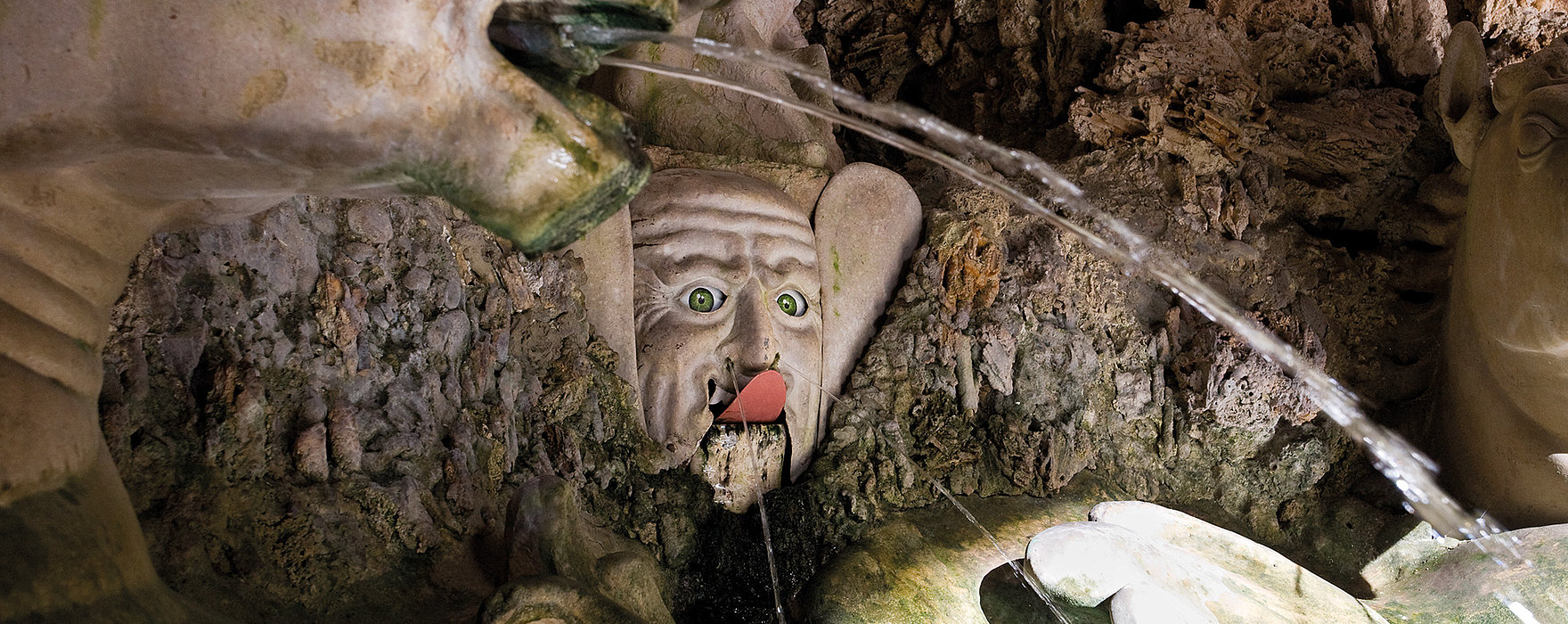JOIN US ON A JOURNEY OF DISCOVERY FROM PREHISTORIC TIMES TO THE PRESENT AND LEARN WHERE YOU CAN EXPERIENCE SALZBURG'S RICH HISTORY UP CLOSE AND PERSONAL.
TIME-TRAVELING THROUGH SALZBURG: CITY AND PROVINCE
THE POWER OF THE ELEMENTS
Long before humans first walked the Earth, the landscape of Salzburg took shape—marked by towering mountain ranges, gentle alpine meadows, and shimmering mountain lakes. If you're interested in how the forces of nature shaped our surroundings eons ago, a visit to Hohe Tauern National Park is definitely a must. Here, you can marvel at the country's tallest peaks and a unique range of flora and fauna. The Grossglockner High Alpine Road takes you deep into the heart of the Hohe Tauern, offering captivating exhibitions about history, nature, and technology at various stops along the way. Nearby, the Krimml Waterfalls and their modern visitor center, Krimml WaterWorlds, demonstrate the staggering power of water—a force that continues to shape our land and its natural beauty. For a “chilling” experience, we suggest heading over to Eisriesenwelt Werfen, the World of Ice Giants, where thousands of visitors admire intricate ice sculptures and formations each year.
A TREASURE FROM THE OCEAN DEPTHS
In the Dürrnberg near Hallein, ancient oceans left behind a treasure that would later lay the foundation for the region's wealth: salt. Once mined by the Celts, today's visitors can journey back in time at Salzwelten Salzburg. The guided tour takes you through the former mine, across an underground salt lake, and zooms down wooden miners' slides. Once back on the surface, an authentically reconstructed Celtic village sheds light on how the early residents of the Dürrnberg lived long ago.
STONE WITNESSES TO POWER
What began with the Celts continued through the Middle Ages as the region's new rulers—the prince-archbishops—rose to prominence through the salt trade. Their influence and power remain immortalized in Salzburg's castles. Hohensalzburg Fortress, for example, showcases its famous Princes’ Chambers—a testament to the splendor in which Leonhard von Keutschach once lived. At Hohenwerfen Castle meanwhile, dungeons and torture chambers bear witness to the harsh rule of bygone lords, while the State Falconer proudly presents majestic birds of prey. Further south, Mauterndorf Castle offers an authentic glimpse into medieval daily life—complete with a drawbridge.
BAROQUE SPLENDOR AND ARISTOCRATIC ENTERTAINMENT
Salzburg truly came into its own in the 15th and 16th centuries when European aspirations toward courtly life radiated out from Italy. Fueled by wealth from the salt trade, the prince-archbishops transformed the medieval city into a Baroque showpiece. The architectural ensemble comprising the Cathedral, the Residenz, and St. Peter's Abbey can now be experienced as part of an impressive, extended museum tour known as the DomQuartier. But that's not all—back in 1615, Prince-Archbishop Markus Sittikus erected Hellbrunn Palace just outside the city as an entertainment venue for his guests. Today, its beautiful park is renowned in particular for its Mannerist trick fountains, which still operate as they did 400 years ago. The palace's exhibition offers intriguing insights into the life and world of Hellbrunn's builder, Markus Sittikus.
THE LIVES OF THE MANY
While Salzburg's rulers lived in opulence, the daily life of their subjects was often defined by hardship. These were largely “simple folk”, such as farmers, laborers, craftsmen, and miners, who eked out an existence from Salzburg’s rugged landscapes. Today's Salzburg Open-Air Museum offers an evocative look into this past, where carefully restored buildings stand as eloquent witnesses to history. A visit offers deep immersion into the life of our ancestors—with added fun elements like a museum railway, a large playground, a Kneipp spa, and a bowling alley, ensuring a good time for young and old.
MASTERPIECES OF TECHNOLOGY
The 20th century was also a time of monumental catastrophes and new beginnings: two World Wars, numerous economic crises, and political upheavals shaped the lives of our grandparents and great-grandparents. “Yet through even the heaviest clouds a glimmer of light doth shine”; Salzburg today hosts two impressive testaments to renewal. First, the Grossglockner High Alpine Road, whose construction began when Austria was grappling with the repercussions of the Great Depression. Nearby, construction of the Kaprun High Mountain Reservoirs resumed in the 1950s, thanks to funding from the U.S. Marshall Plan, after being halted due to a lack of funds during World War II. Today, these reservoirs are among the region's most popular attractions and their exhibitions offer fascinating insights into Salzburg's 20th-century history.











